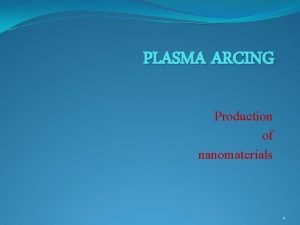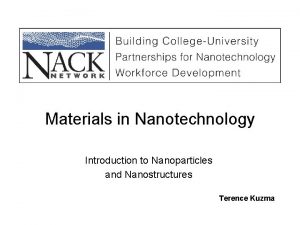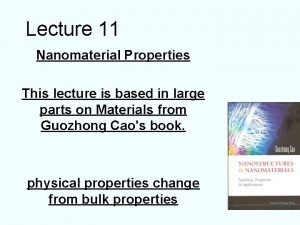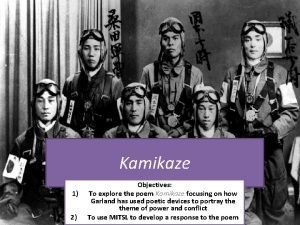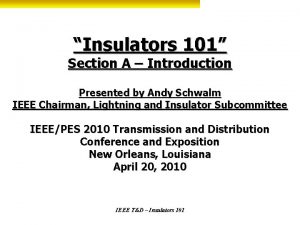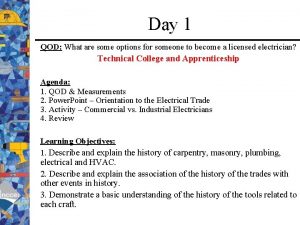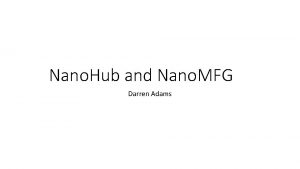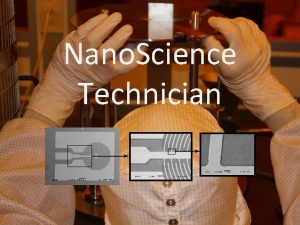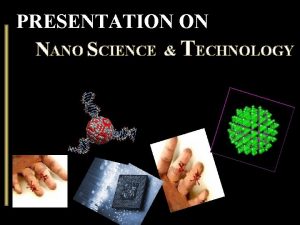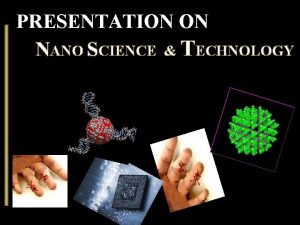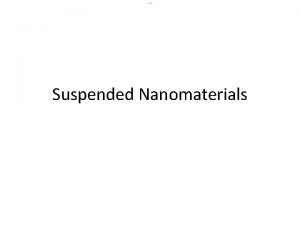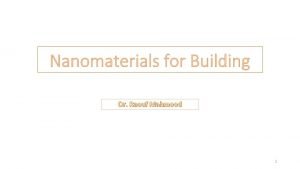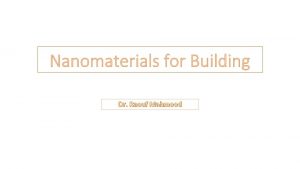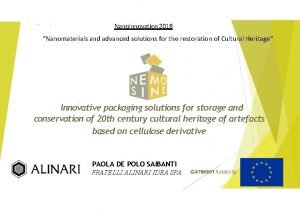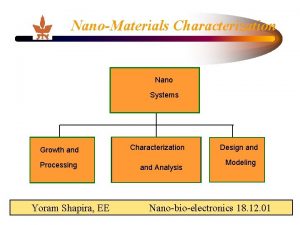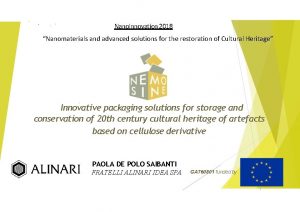PLASMA ARCING Production of nanomaterials 1 Nano material












- Slides: 12

PLASMA ARCING Production of nanomaterials 1

ØNano material or nano particles are used in a broad spectrum of applications. ØSpecific synthesis process are employed to produce the various nano particles ØDefined production and reaction condition are crucial in obtaning such size dependent paricle. ØParticle size, chemical compositoin, crystallinity and shape can be controlled by temperature , ph-value, concentration, chemical composition, surface modification and process control.

Ø Two basic strategies are used to produce nano particles… § Top-down and § Bottom-up. Ø Top-down: Producing very small structures from larger pieces of material. One way of acheving this is mechanical crushing of solid into fine nano powder (ball milling) ØBottom-up: The atoms or molecules array themselves into a structure due to their natural properties e. g: crystal grown (or) In bottom-up stratergy, structures are built up by chemical process.

The selection of the respective process depends on the chemical composition and the desired features specified for the nano particles Method of preparation: Ø Plasma arcing. ØPhysical vapour deposition(PVD). ØChemical vapour deposition(CVD). ØSol-gels. ØElectro deposition. ØBall milling.

Plasma arcing method: ØPlasma is an ionized gas. ØA plasma is achieved by making a gas conduct electricity by providing a potential difference across two electrodes. ØElectrodes are made of conducting material. ØElectrodes can be made of mixture of conducting and non-conducting materials. ØA contracted plasma arc is generated by a plasma torch using an inert gas which is used as heat source.

Plasma torch

ØIn arc discharge method, two high purity graphite electrodes as anode and cathode are held at a distance under helium atmosphere. ØUnder these conditions, some of the carbon evaporated from the anode recondensed as hard cylindrical deposit on the cathode rod.

ØAn arc passes from one electrode to the other. ØThe electrons are emitted from the first electrode (anode) due to potential difference. ØPositively charged ions pass to the other electrode(cathode) and gets deposited to form nano particle. ØThe depth of deposited surface must by only few layers ØEach particle must be nanosized and independent.

Conditions: Average mass temperature of arc is higher than 104 K , while its power density transferred onto the electrode (anode) is approximately 2 KW/mm 2.

ØUsing this method individaul carbon nanotubes could be achieved in general several hundred microns long. ØThus plasma arcing method is bottom-up method.

Plasma arc lamp

Plasma arc
 Plasma arcing
Plasma arcing Nanoparticles definition
Nanoparticles definition Mechanical properties of nano materials
Mechanical properties of nano materials Magnetic properties of nanomaterials
Magnetic properties of nanomaterials Jelaskan proses pembuatan multimedia content production
Jelaskan proses pembuatan multimedia content production Kamikaze poem reading
Kamikaze poem reading Ncis
Ncis Why must an arcing device be contained
Why must an arcing device be contained Level strategy production planning
Level strategy production planning What is real culture
What is real culture Gd & t symbols
Gd & t symbols Example of material culture
Example of material culture Standard costing and variance analysis formulas
Standard costing and variance analysis formulas
